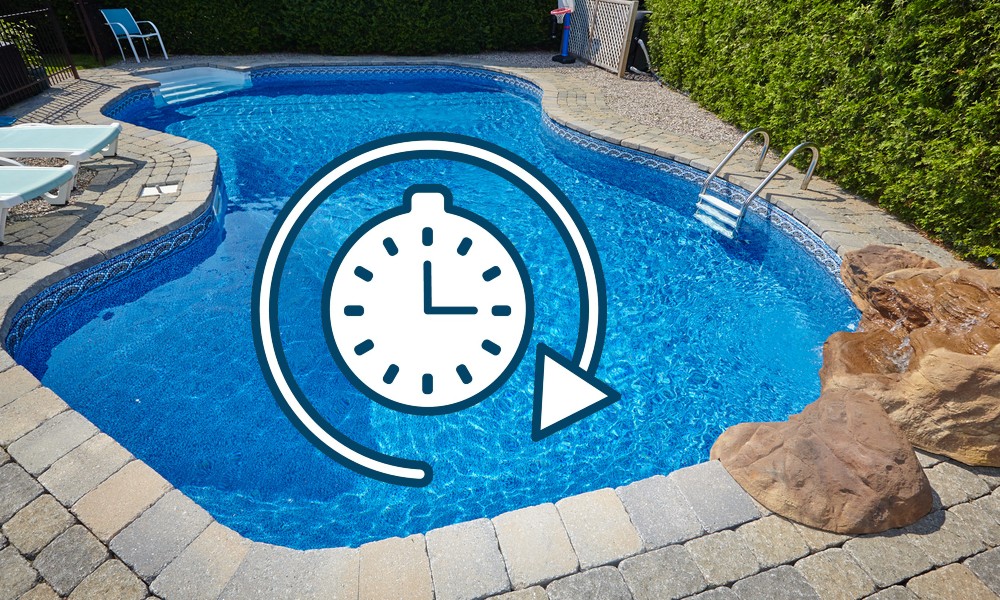Table of Contents
TogglePutting in a new pool is a significant investment. You’re not just paying to improve both your home and your day-to-day life. You’re also committing yourself to a particular payment plan that enables you to properly finance the construction. Most people find themselves wondering how long can you finance a pool, and whether long-term or short-term financing is a better option. And you’ll soon see exactly how to determine which financing strategy is the best fit for your own unique needs.
How Long Can You Finance a Pool?
You can finance a pool anywhere from 1 year up to 30 years. Longer terms mean lower monthly payments, but overall interest paid is higher. The 3 factors of a loan are; amount borrowed, interest rate and length of loan. Changing any one of these affects how much your monthly payment will be and therefore the length of a loan will be unique to everyone.
How Long Is Long-Term Financing?
There is a simple answer to this question and a more in-depth one. The short answer is that most financing sources that are genuinely competitive in swimming pool financing (as opposed to banks, mortgage companies, local credit unions, etc.) offer terms up to 20-30 years. Term referring to the length of time needed to pay back the loan. Those long-term loans usually provide the lowest recurring payments and are a popular option.
However, it’s important to make a distinction between a low recurring payment and a low total cost over time.
This is in part why the short answer of 20 to 30 years only gives part of a larger story. The more complete answer to the question of how long can you finance a pool is that the duration of a loan is largely dependent on the best match for your unique situation.
Longer-term loans are coupled with higher rates. Also, the longer you stretch the term, the more interest you pay over time. This is part of why it’s important to speak to a qualified loan consultant to see what’s right for you. For instance, if you don’t mind a slightly higher payment, say $100 per month, that would come with a shorter term and a lower rate.
When you do the math, that extra $100 you pay every month will allow you to pay thousands less in interest over the life of the loan and pay the loan off sooner.
A Deeper Dive Into Financing Options

The next step in determining how long can you finance a pool is best illustrated with an example. Say you’re working with a $50,000 project. Most people in the market for a pool loan of this size or larger have cars in the same price range. Those car loans usually won’t stretch past 5-7 years. If you needed a 30-year term to buy that car, it might be too much car. Let’s look at pools and other home improvement projects. Assuming the rate is the same for a 30-year home improvement loan as it is for a 15-year loan (It’s usually higher, but not always), here’s what you need to know to compare:
A: At $50k and a 6.99% rate with a 30-year term, that’s a payment of $332 per month
B: At $50k and a 6.99% rate with a 20-year term, that’s a payment of $387 per month
C: At $50k and a 6.99% rate with a 15-year term, that’s a payment of $449 per month
Now, let’s see what those projects cost by the time you pay them off.
In example A, the total payments are $119,520. That’s 360 monthly payments (30 years) at $332 per.
For example B, the total of the 20-year payments is $92,880. That’s 240 monthly payments (20 years) at $387. Getting better, but still a lot.
In example C, the 15-year term has a total payback of $80,820. This is 180 monthly payments (15 years) at $449.
Long-term loans look attractive at first glance because of the smaller payment size, but it’s never the right decision if you don’t mind a slightly larger payment.
Asking how long can you finance a pool essentially asks how much extra interest will be added.
The difference from the 30-year to the 15-year is $38,700! And that’s just the ADDITIONAL interest you pay over the life of the loan, all to save yourself $117 per month. The reason the difference is so stark is that on the shorter-term loan, all of that extra $117 is essentially going right to the principle of the loan and paying it down.
On the 30-year loan, you pretty much pay all interest on the front end of the loan.
The only reason to take the smaller payment is if you intend to pay it off quickly and just need the lower payment for the short term. Every year that you make payments on a 30-year loan, you pay very little towards the actual loan and the cost of your pool keeps going up. If you are OK with a small increase in payment per month, you can save a fortune.
Oftentimes it’s best to look for a balance between the two extremes of long-term and short-term loans. A middle ground of five to seven-year loans has become popular among many pool owners. It’s a long enough period to provide a generally low monthly fee, but not long enough to build up too much interest.

Every Pool Is a Unique Investment
It’s also worth noting how much planning needs to go into your pool financing, such as deciding on the overall cost of the pool. Doing so begins by answering one question. How much does a swimming pool cost? This will largely depend on the specifics of the type of pool and options such as heating or your construction material. But you also need to consider how your finances will change over time. You need to give serious thought to what your life will be like in the future and how this will impact your ability to make payments.
The process can be made easier by considering the unique elements of your situation. You should stop and really think about your current financial state and how that’s likely to change over time. You can also use a pool loan calculator to help turn rough ideas into solid numbers.
Is a larger payment over a longer period the best match for how you see your financial situation changing over time? Or do you see a steady increase in what you’d be able to pay? Do you foresee your family growing? And, if so, how will that impact your payments? Some people will want to take care of any outstanding loans before starting a family. Others will want to keep payments lower on a recurring basis in order to make their growing family more financially comfortable during that period. Plus you should also keep in mind that your new pool will add value to your home when you’re considering future resources.
One of the important points to keep in mind is that there’s really no single answer that will fit everyone. Your personal finances are just that, personalized for your unique needs. This too is why it’s usually a good idea to talk to a qualified loan consultant. These individuals can often offer invaluable insight into how factors within your life might make certain financial decisions a better or worse choice when compared to someone with different circumstances. For example, understanding types of credit scores can provide you with a lot of benefits in some situations. As your scores improve you’re often eligible for more financing options and an overall lower rate.
Different Circumstances and Different Rates

If you or a family member are in the military we have special rates that you can qualify for, get in touch with us for more details.
This offer is not just for active service personnel as we also have pool loans for veterans and their families available too.
And this general principle holds true for most elements of pool financing. You’ll typically use a wide variety of different services over the course of your pool ownership. And every phase of it comes with unique circumstances, follow these tips for getting the right loan to help you get started with your best foot forward.
As you’ve seen so far, financial options can be somewhat counter-intuitive. The smaller incremental payments from long-term financing often seem like the best deal. But the actual amount paid over the course of that span is typically far more than with short-term payments. It’s always a good idea to step back and look at all of the options for every aspect of your pool. You may well be surprised by opportunities for discounts.
The Takeaway:
The bottom line is, don’t fall for the “we offer the lowest payment” gimmick. This isn’t a lease. You are buying this and trying to pay it off so you can build equity in your home. You should also make sure to have a qualified loan consultant run these numbers for you before you decide. Everyone’s situation is different and will provide unique opportunities to save money.












